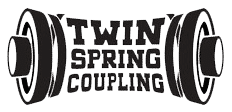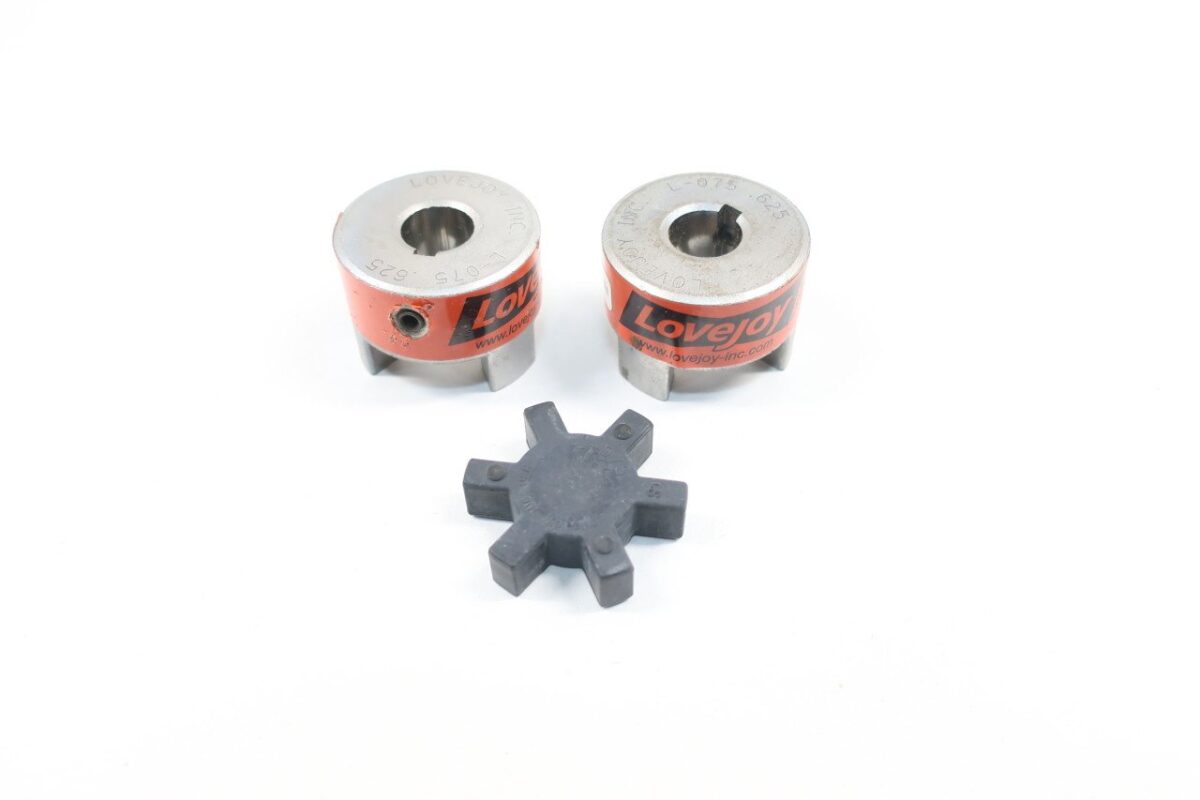Elastomeric vs Gear Couplings – Which Coupling is Right for Your Plant
Table of Contents
In the world of industrial machinery, choosing the right coupling for your operations can significantly impact your plant’s efficiency, equipment lifespan, and downtime. As a spare parts or operational manager, selecting the appropriate coupling is essential to ensuring smooth operations. Two common types of couplings widely used in industrial applications are elastomeric couplings and gear couplings. Each has its distinct advantages and limitations, making it crucial to understand their differences and best-use cases.
In this post, we’ll provide a detailed comparison of elastomeric and gear couplings, focusing on their design, functionality, application, and maintenance requirements. By the end, you’ll be better equipped to decide which type of coupling is right for your plant’s machinery.
What Are Couplings and Why Are They Important?
Before diving into the comparison, it’s important to revisit the purpose of couplings. Industrial couplings are mechanical devices used to connect two rotating shafts, allowing them to transmit torque while accommodating for misalignment, vibration, and thermal expansion. A reliable coupling ensures smooth power transmission, minimizes wear and tear on connected machinery, and reduces the likelihood of unplanned downtime due to equipment failure.
There are several types of couplings available in the market, but two of the most popular for industrial applications are elastomeric and gear couplings. Let’s take a closer look at each type and how they function.
Elastomeric Couplings: An Overview
Design and Functionality
Elastomeric couplings, as the name suggests, rely on a flexible elastomeric element—typically made of rubber, polyurethane, or other polymers—to transmit torque between two shafts. The elastomeric element serves as a cushion, absorbing vibrations, misalignment, and shock loads while allowing for flexibility in the connection.
The key components of elastomeric couplings include:
- Two metallic hubs that attach to the respective shafts
- An elastomeric insert or spider that fits between the hubs, which deforms under load to transmit torque
This type of coupling is non-lubricated, and its ability to absorb misalignment and vibration makes it suitable for applications where smooth operation and shock absorption are critical.
Advantages of Elastomeric Couplings
- Damping of Vibrations and Noise
One of the primary advantages of elastomeric couplings is their ability to dampen vibrations and noise. The flexible elastomeric element absorbs mechanical vibrations, reducing wear on connected equipment and providing a quieter operating environment. - Tolerance for Misalignment
Elastomeric couplings can tolerate a moderate degree of angular and parallel misalignment without compromising their performance. This can be beneficial in situations where exact alignment of the shafts is difficult to achieve or maintain over time. - No Lubrication Required
Since elastomeric couplings rely on a flexible insert to transmit torque, they do not require lubrication. This means less maintenance and reduced risk of leaks or contamination compared to lubricated couplings like gear couplings. - Shock Load Absorption
The elastomeric element also allows these couplings to absorb and cushion shock loads that may occur during operation, helping to protect the connected equipment from damage.
Disadvantages of Elastomeric Couplings
- Limited Torque Capacity
Elastomeric couplings are not as robust as gear couplings when it comes to transmitting high torque. For heavy-duty applications where high torque and precision are essential, they may not be the best choice. - Temperature Sensitivity
Elastomeric materials can be sensitive to extreme temperatures, which may cause them to degrade over time. In applications that involve high temperatures, elastomeric couplings may need more frequent replacement. - Material Fatigue
Over time, the elastomeric material can suffer from fatigue and wear, which may require periodic replacement of the elastomeric element.
Applications of Elastomeric Couplings
Elastomeric couplings are commonly used in applications where vibration control is critical, such as:
- Pumps and compressors
- Fans and blowers
- Conveyors
- Small to medium-sized motors
Their ability to absorb shocks and accommodate misalignment makes them ideal for lower-speed, lower-torque applications where equipment protection and smooth operation are priorities.
Gear Couplings: An Overview
Design and Functionality
Gear couplings are designed to transmit high torque between two shafts through gear teeth. These couplings consist of:
- Two hubs with external gears that connect to the shafts
- Two outer sleeves with internal gears that engage with the hub gears
The gear teeth allow for a rigid connection between the shafts, transmitting torque efficiently even under high loads. Gear couplings can accommodate angular misalignment by allowing the gears to slide slightly within the outer sleeves.
Advantages of Gear Couplings
- High Torque Transmission
Gear couplings are built for heavy-duty applications, where high torque transmission is required. They are capable of transmitting more torque than elastomeric couplings, making them suitable for demanding industrial machinery. - Precision Alignment
Gear couplings provide precise torque transmission with minimal backlash, making them ideal for applications where alignment precision is critical. - Durability
Made of metal, gear couplings are highly durable and can withstand extreme conditions, including high temperatures, heavy loads, and harsh environments. - Compact Design
Despite their high torque capacity, gear couplings are relatively compact, making them ideal for space-constrained applications.
Disadvantages of Gear Couplings
- Regular Maintenance Required
Gear couplings require frequent lubrication to prevent wear and minimize friction between the gear teeth. Improper lubrication can lead to premature failure, increased wear, and higher maintenance costs. - Limited Misalignment Tolerance
While gear couplings can accommodate some angular misalignment, they are less tolerant of misalignment than elastomeric couplings. Precision alignment is critical to prevent excessive wear and ensure longevity. - Vibration and Shock Sensitivity
Gear couplings offer little to no vibration or shock absorption. If not properly maintained or aligned, they may transmit excessive vibrations to connected equipment, potentially leading to damage or failure.
Applications of Gear Couplings
Gear couplings are commonly used in high-torque, high-speed applications, including:
- Heavy machinery such as crushers and mills
- High-power motors and generators
- Steel mills and mining equipment
- Rolling mills
Their robustness and ability to handle heavy loads make them ideal for demanding industrial applications where torque transmission is a top priority.
Elastomeric vs. Gear Couplings: A Side-by-Side Comparison
| Feature | Elastomeric Couplings | Gear Couplings |
|---|---|---|
| Torque Capacity | Moderate | High |
| Misalignment Tolerance | High tolerance for angular and parallel misalignment | Limited tolerance, requires precision alignment |
| Maintenance | Low maintenance, no lubrication required | High maintenance, requires regular lubrication |
| Vibration Dampening | Excellent vibration dampening | Minimal vibration dampening |
| Durability | Moderate durability, elastomer may wear over time | High durability, metal construction |
| Shock Load Absorption | High shock load absorption | Limited shock load absorption |
| Temperature Sensitivity | Sensitive to extreme temperatures | Handles high temperatures well |
| Applications | Low-to-medium torque applications | High-torque, heavy-duty applications |
Which Coupling is Right for Your Plant?
Choosing between elastomeric and gear couplings depends on your plant’s specific needs. Consider the following factors when making your decision:
- Torque Requirements: If your machinery operates under heavy loads and requires high torque transmission, a gear coupling is likely the better choice.
- Vibration and Shock Control: If vibration dampening and shock absorption are critical to your operation, particularly for equipment like pumps, blowers, or conveyors, an elastomeric coupling will offer superior performance.
- Maintenance and Lubrication: If you prefer a low-maintenance option with no need for lubrication, elastomeric couplings are ideal. Gear couplings, while durable, require regular upkeep.
- Precision Alignment: For applications where precision is key, such as in high-speed motors or heavy machinery, gear couplings provide the rigidity and alignment needed for accurate torque transmission.
- Cost: Elastomeric couplings tend to be more affordable upfront and easier to maintain. However, if long-term durability and high-torque capability are priorities, the higher initial investment in gear couplings may be justified.

